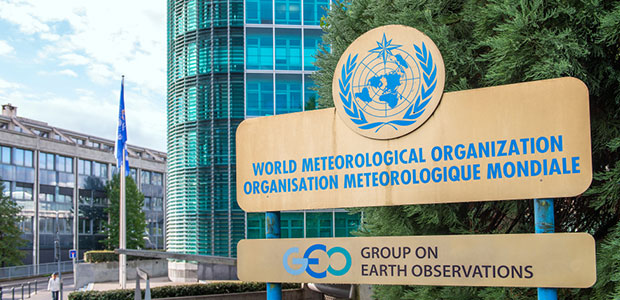World Meteorological Organization (WMO) confirmed that Antarctica has yet another time reached a record-breaking temperature of 18.3 degrees celsius.
It verified the temperature of 18.3° Celsius recorded on 6 February 2020 at the Esperanza station (Argentina). However, it denied recognizing the even higher temperature record of 20.75°C reported on 9 February 2020.
The latter record was recorded on an automated permafrost monitoring station in Brazil on Seymour Island.
The Guardian reported the tweet of Argentina’s meteorological agency which announced this all-time high temperature for Argentina on 6th Feb 2020 and it has been confirmed by WMO on 1st July 2021.
Previously, the highest temperature known for the Antarctic region was 17.5°C (63.5°F) recorded on 24 March 2015 at Esperanza Research Station which was verified and stated in a report by WMO on 1 March 2017.

However, the highest is still been the 1982 January temperature at Signy Island located at a distance of 600 km from the Antarctic Peninsula.
Prof. Petteri Taalas, WMO Secretary-General said “Verification of this maximum temperature record is important because it helps us to build up a picture of the weather and climate in one of Earth’s final frontiers.
Even more so than the Arctic, The Antarctic is poorly covered in terms of continuous and sustained weather and climate observations and forecasts, even though both play an important role in driving climate and ocean patterns and in sea-level rise.”
“The Antarctic Peninsula (the northwest tip near to South America) is among the fastest-warming regions of the planet, almost 3°C over the last 50 years.

This new temperature record is therefore consistent with the climate change we are observing. WMO is working in partnership with the Antarctic Treaty System to help conserve this pristine continent,” added Prof. Taalas.
When the high record was reported for the first time in 2020, a committee for WMO’s Weather and Climate Extremes Archive set to verify its authenticity. It studied the weather situation of the Antarctic Peninsula at the time of the recording.
The committee observed that a large high pressured system led to the creation of downslope winds which caused to warm the surface and hence both the Esperanza Station and Seymour Island saw high temperatures. These conditions tend to lead to this rise in temperature based on past observations.
The investigative committee also studied the instrumental setups of both the research laboratories which recorded these temperatures.

The data recorded by the Esperanza station run by Argentina’s national meteorological service was found to be fine.
However, the examination of the data by the Seymour Island permafrost monitoring station operated by a Brazilian polar science research team was found to be based on an improvised radiation shield which led to creating a thermal bias error in the temperature sensor.
This expert committee consisted of many accomplished scientists. They were polar science and climate experts from Argentina, Brazil, New Zealand, Spain, the United Kingdom, and the United States.

This new record will be included in the WMO Archive of Weather and Climate Extremes. It is a registry of aspects like:
- The worlds highest and lowest temperatures
- Data on Rainfall
- The maximum gush of wind
- Heaviest hailstorm
Longest dry period
- Longest lightning flash
- Weather-related mortalities.
The expert committee emphasized the need to understand the sensitivity of these kinds of information for both the scientists and the media. The potential record shouldn’t be released to the public without knowing its authenticity.
The media and many social media platforms tend to sensationalize this information without proper investigation of the data and its verification.
The WMO has decided to put together a ‘rapid analysis team’ that will help the global media to present facts which has some ground because verifying the data often takes months.

“This investigation highlights an important ‘teachable moment,’ particularly concerning the dissemination of such information to media.
When news of these observations became known, global media quickly disseminated them with headlines of temperatures exceeding 20°C for the first time in Antarctica. The examples presented here illustrate why media should be cautious in reporting temperature extremes,” said Prof. Randall Cerveny, Rapporteur of Climate and Weather Extremes for WMO.
Prof. Celeste Saulo, Director of Argentina’s SMN and First Vice President of WMO said that this new record is a reminder of how significant and fast climate change is.
Hence it is important to keep on making our systems more efficient to know and continue the work on the early warning systems and forecasting to prepare for these extreme scenarios which are happening more often due to global warming.
















